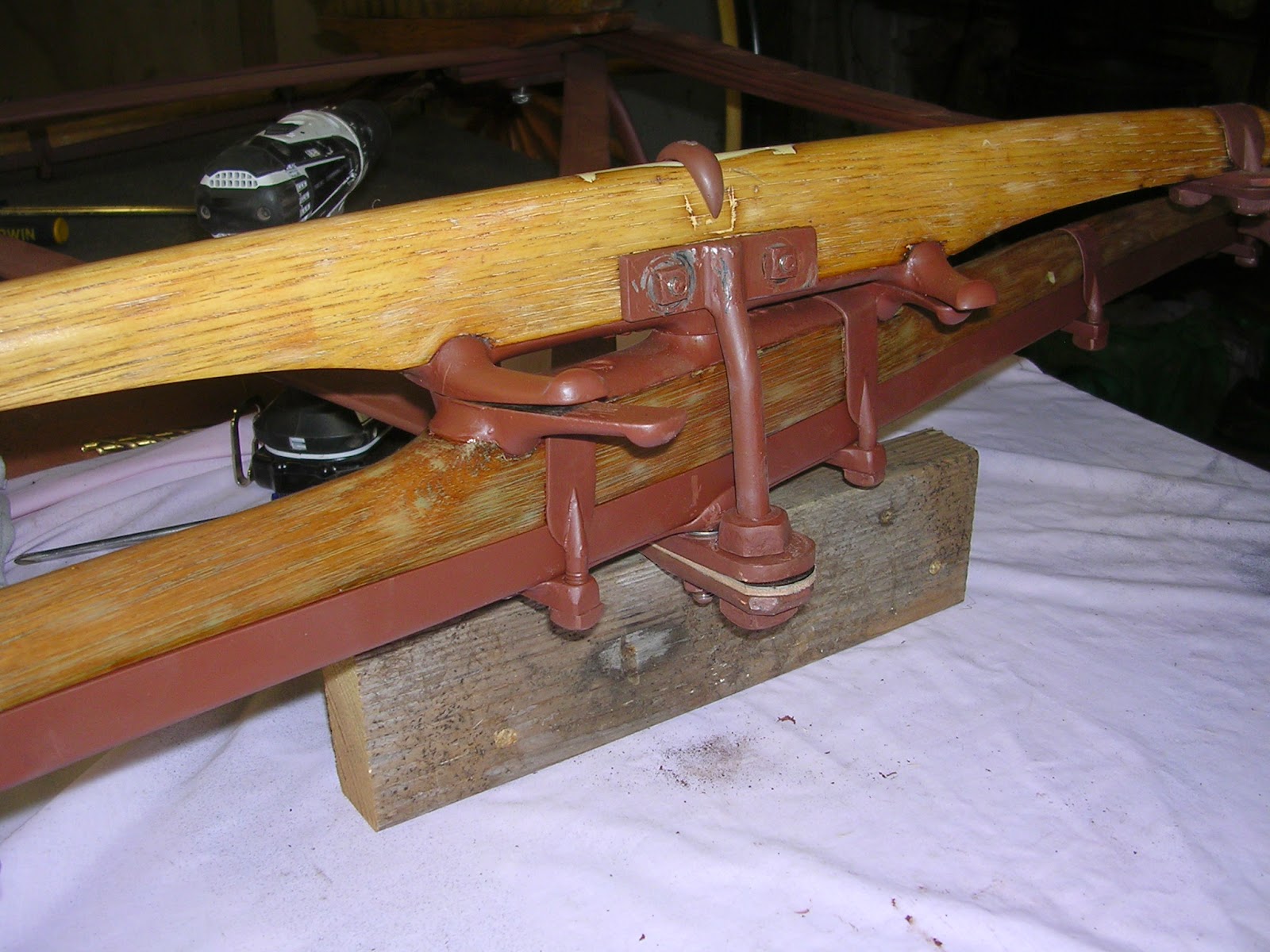This is the story of a certain Australian "jinker" that found its way to the western shores of the United States.
Now, the term "jinker" is familiar in the state of Victoria (where sometimes it is known as a "Mallee jinker"), but in other parts of the country, such as New South Wales, the vehicle is correctly termed "sulky". Obviously it has no similarity at all to an American "sulky". Common to the jinker/sulky vehicle are "Dennett" springs, a comfortable seat which shifts easily with the turn of a small crank (for balance), and a degree of artistry that varies from pretty details to real drama. This little jinker is in the "pretty details" category, and the wood components of the vehicle, including the "LaTrobe" seat, were available in kit form.
This carriage was in the possession of a lovely lady who had acquired it free, along with another vehicle in much better condition, at an auction. It was in such bad shape that it was just thrown in with the other vehicle. Professional restorers scoffed at it (to me, after I acquired it) and it was in danger of becoming a lawn ornament.
During a visit to Victoria at the turn of the 21st century, I was introduced to this lady, and I expressed such great interest in the vehicle that she gave it to me! All I had to do was figure out how to get it home!
This gift unleashed a flurry of frenzied activity!
We located an exporter in Castlemaine who was actually familiar with exporting carriages, and he directed us to a crating firm in Kangaroo Flats. We hired a flatbed trailer, and hooked it to the back of Jim Sweeney's ute, shown in the background of this photo. Jim had already gone to prodigious effort to be at that particular place, at that particular time, and now we had a bit of mad driving to do to meet some unremembered deadline to get it to the packer!
Here we are at the packer, with wheels removed for crating. But the drama doesn't end here.
We had to CUT THOSE LONG SHAFTS OFF way back at the body and throw them away!
NO WORRIES! They were junk anyway!
Thus began the 22,000 mile ocean voyage of the little jinker on its way to Long Beach, California, and thence up to Portland, Oregon.
Two months later, the vehicle arrived and reality set in. The vehicle really WAS a wreck! Someone had savaged all the wood work with a sharp instrument, scarring it deeply, all over!
One of the steps was missing, a critical part that also serves as bracing at the front of the vehicle.
This particular photo shows the hand-forged replacement, that came at quite a dear price!
The AXLE was not original, and the WHEELS, were shot, which didn't matter, because they didn't fit the axle anyway!
The wooden mud guards were gone. The cast treads on the shafts were gone. The lamp brackets were gone, and CERTAINLY the lamps were gone! The wooden mud guards were gone. The seat boards were rotted.
But the spirit of the thing lived on, and I saw absolutely NOTHING on the vehicle that I couldn't fix, or have fixed!
I will not bore you with all the details of the restoration. I just want you to know that virtually NOTHING is insurmountable in your carriage restoration project! In this photo, I have lined up a new pair of shafts from Witmer Coach shop with various original parts, such as the "span iron" (the support for the rear transverse spring), the original seat risers (luscious dark wood!) and some other components just to "see". I later spent hours and hours with hand tools, a spoke shave, a belt sander, and a Sure-Form, putting a crown on the new shafts to match the old, and even carved in the simple scroll at the ends of the shafts to match the originals.
I made new seat boards with a cheap router and more hand tools. I repaired cracks - some successfully, some not so much. I had stress cracks in the old ironwork welded up.
I bought it a new roller bearing axle and put a set of freshly tightened wheels on it, that I happened to have on hand.
I bought new mud guards and a singletree from Witmer.
I learned how to upholster from a funky video tape (this is my first button job)
And in a surprisingly short period of time, this was the result! A thing of beauty and a joy forever!
Today, 12 years later, it's now a bit of an "older restoration" and it shows a little road rash from its new career as a recreational driving vehicle. It floats over rough ground and rides like a cloud! And never has there been a suggestion of weakness.
So take heart, fellow carriage restorers! You too will see the completion of your project and will be able to enjoy the pride of your accomplishment, not to mention HOURS of wonderful driving, for years to come!


























